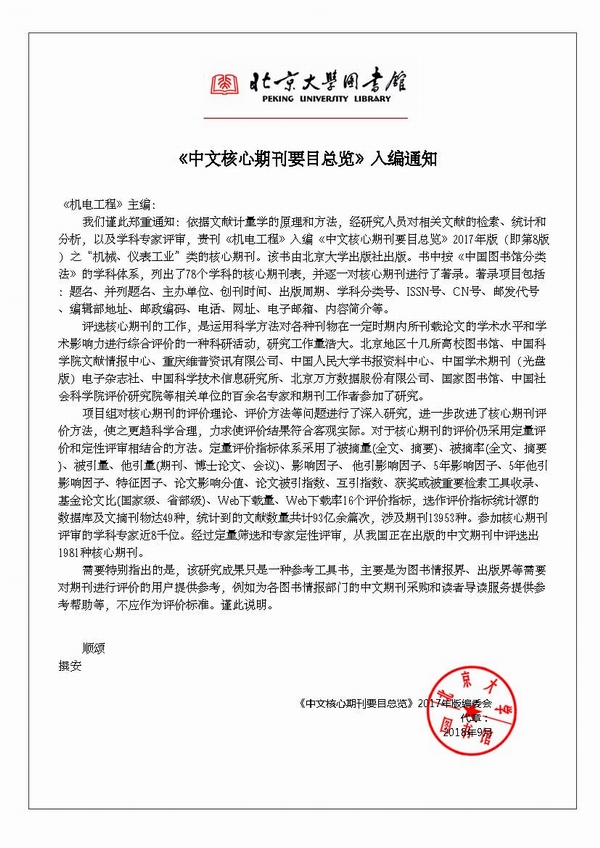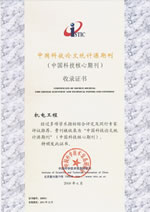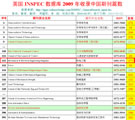
Founded in 1971 >
Chinese Sci-tech Core Periodicals >
British Science Abstracts (SA, INSPEC) Indexed Journals >
United States, Cambridge Scientific Abstract: Technology (CSA: T) Indexed Journals >
United States, Ulrich's Periodicals Directory(UPD)Indexed Journals >
United States, Cambridge Scientific Abstract: Natural Science (CSA: NS) Indexed Journals >
Poland ,Index of Copernicus(IC) Indexed Journals >
International Standard Serial Number:
ISSN 1001-4551
Sponsor:
Zhejiang University;
Zhejiang Machinery and Electrical Group
Edited by:
Editorial of Journal of Mechanical & Electrical Engineering
Chief Editor:
ZHAO Qun
Vice Chief Editor:
TANG ren-zhong,
LUO Xiang-yang
Tel:
86-571-87041360,87239525
Fax:
86-571-87239571
Add:
No.9 Gaoguannong,Daxue Road,Hangzhou,China
P.C:
310009
E-mail:
meem_contribute@163.com
Abstract: Aiming at the problem that it was difficult for traditional signal processing methods to extract fault features that could fully and accurately reflect the running state of bearings from bearing vibration signals, and the amount of data collected in practical engineering was difficult to meet the requirement of large data amount in deep learning, a bearing fault identification model based on time-frequency graph and dual-channel convolutional neural network (CNN) was proposed. Firstly, a new objective function was constructed based on sample entropy and kurtosis, the grey wolf optimization algorithm (GWO) was used to optimize the parameters of variational mode decomposition (VMD); when the objective function reached the minimum value, the optimal parameter combination was obtained. Secondly, the optimized VMD was used to process the bearing signal, and the obtained modal components were calculated by smoothing pseudoWigner Ville distribution (SPWVD), and the time-frequency graph of the bearing was obtained by summing the calculated results. Thirdly, the continuous wavelet transform (CWT) was used to process the original signal directly to obtain the time-frequency graph. Finally, the time-frequency graphs obtained by the two methods were respectively used as the input of dual-channel CNN to train the network, and the features of the time-frequency graphs were extracted by CNN and faults were classified. The experimental results show that the accuracy rate of the proposed method is 99.29% in the bearing fault experiments, and the average accuracy rate is 99.61% in ten experiments. Comparing with the single-channel CNN and support vector machine (SVM), the proposed method has higher accuracy and better stability. The results show that this method has the characteristics of high accuracy and strong stability in the field of bearing fault diagnosis, and can effectively diagnose bearing faults.
Key words: time-frequency analysis; variational mode decomposition(VMD); smoothed pseudo Wigner-Ville distribution(SPWVD); continuous wavelet transform(CWT); dualchannel convolutional neural network(CNN); grey wolf optimization algorithm(GWO)








